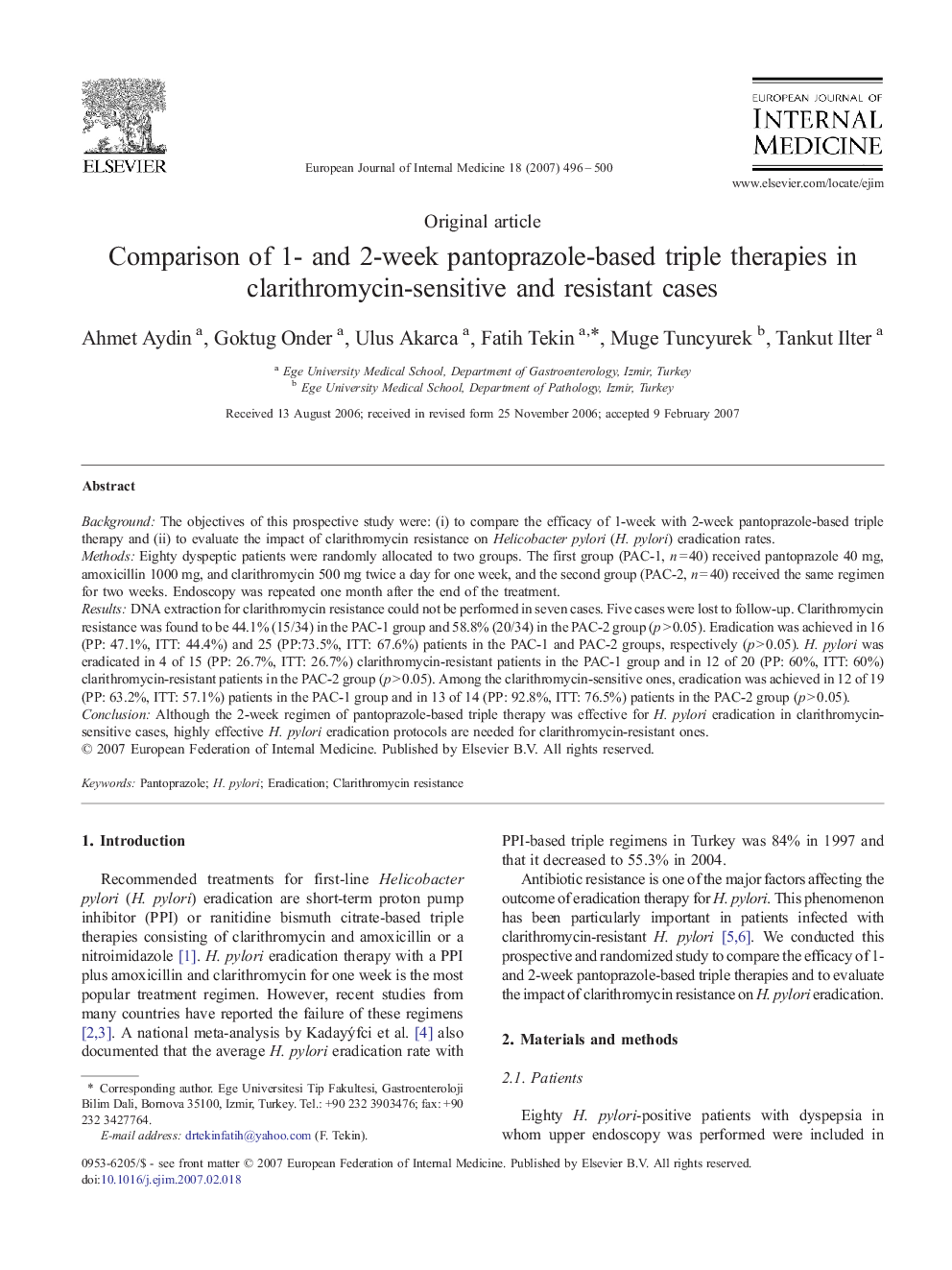| Article ID | Journal | Published Year | Pages | File Type |
|---|---|---|---|---|
| 3468210 | European Journal of Internal Medicine | 2007 | 5 Pages |
BackgroundThe objectives of this prospective study were: (i) to compare the efficacy of 1-week with 2-week pantoprazole-based triple therapy and (ii) to evaluate the impact of clarithromycin resistance on Helicobacter pylori (H. pylori) eradication rates.MethodsEighty dyspeptic patients were randomly allocated to two groups. The first group (PAC-1, n = 40) received pantoprazole 40 mg, amoxicillin 1000 mg, and clarithromycin 500 mg twice a day for one week, and the second group (PAC-2, n = 40) received the same regimen for two weeks. Endoscopy was repeated one month after the end of the treatment.ResultsDNA extraction for clarithromycin resistance could not be performed in seven cases. Five cases were lost to follow-up. Clarithromycin resistance was found to be 44.1% (15/34) in the PAC-1 group and 58.8% (20/34) in the PAC-2 group (p > 0.05). Eradication was achieved in 16 (PP: 47.1%, ITT: 44.4%) and 25 (PP:73.5%, ITT: 67.6%) patients in the PAC-1 and PAC-2 groups, respectively (p > 0.05). H. pylori was eradicated in 4 of 15 (PP: 26.7%, ITT: 26.7%) clarithromycin-resistant patients in the PAC-1 group and in 12 of 20 (PP: 60%, ITT: 60%) clarithromycin-resistant patients in the PAC-2 group (p > 0.05). Among the clarithromycin-sensitive ones, eradication was achieved in 12 of 19 (PP: 63.2%, ITT: 57.1%) patients in the PAC-1 group and in 13 of 14 (PP: 92.8%, ITT: 76.5%) patients in the PAC-2 group (p > 0.05).ConclusionAlthough the 2-week regimen of pantoprazole-based triple therapy was effective for H. pylori eradication in clarithromycin-sensitive cases, highly effective H. pylori eradication protocols are needed for clarithromycin-resistant ones.
